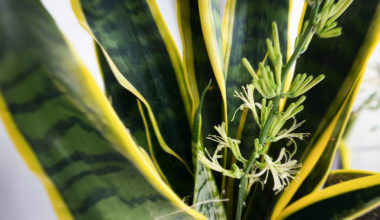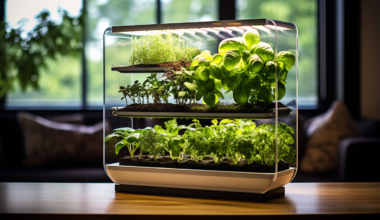Snake plants, also known as Sansevieria or mother-in-law’s tongue, are popular indoor plants loved for their striking appearance and low maintenance needs. Whether you’re a seasoned plant enthusiast or a beginner, the snake plant is an excellent choice due to its resilience and ability to thrive in various conditions. In this comprehensive guide, we will explore everything you need to know about caring for a snake plant, including lighting requirements, watering guidelines, soil preferences, propagation methods, common issues, and more. Get ready to nurture a healthy and vibrant snake plant that will enhance the beauty of your indoor space.
Understanding the Snake Plant
The snake plant is native to West Africa and is characterized by its upright, sword-like leaves with unique variegation patterns. Snake plants are known for their tolerance to low light conditions, making them ideal for indoor environments with limited natural sunlight. They are considered one of the best air-purifying plants, removing toxins such as formaldehyde and benzene from the air. Snake plants come in different varieties, including the popular Sansevieria trifasciata with dark green leaves and yellow edges, as well as other cultivars with unique leaf patterns.
Lighting Requirements
Snake plants can adapt to a wide range of lighting conditions. Moderate to bright indirect light is ideal for snake plants. Place them near a north or east-facing window where they can receive bright, filtered light. While snake plants can tolerate low light conditions, prolonged exposure to darkness may result in slower growth and less vibrant foliage. Avoid placing snake plants in direct sunlight as it can scorch the leaves and lead to damage.
Watering Guidelines
Proper watering is crucial for maintaining a healthy snake plant. Snake plants are drought-tolerant and prefer to be slightly under-watered than over-watered. Allow the soil to dry out between waterings. Water your snake plant thoroughly but infrequently. Aim to provide a deep watering session, allowing excess water to drain out from the pot’s drainage holes. During the active growing season (spring and summer), water your snake plant once every two to three weeks. Reduce watering frequency during the dormant period (fall and winter) to once a month or when the soil is completely dry. Over-watering can lead to root rot and other issues, so it’s important to avoid waterlogged conditions.
Soil Preferences
Choosing the right soil is essential for the health and well-being of your snake plant. Use a well-draining soil mix specifically formulated for succulents or cacti. These mixes often contain a combination of peat moss, perlite, and coarse sand. The soil should allow excess water to drain quickly, preventing the roots from sitting in soggy conditions. Avoid using heavy, compacted soils or those that retain too much moisture, as they can lead to root rot and other problems.
Temperature and Humidity
Snake plants are known for their adaptability to various temperature and humidity conditions. They can tolerate a wide temperature range, ideally between 60°F (15°C) to 85°F (29°C). They can withstand slightly cooler temperatures but are sensitive to frost and extreme cold. They are not particularly sensitive to humidity levels and can thrive in both low and moderate humidity environments. Avoid placing snake plants near drafty areas or in direct contact with heating or cooling vents, as sudden temperature fluctuations can impact their health.
Fertilizing Practices
While snake plants are generally low maintenance, occasional fertilizing can help promote growth and maintain their overall health. Use a balanced, water-soluble houseplant fertilizer formulated at half the recommended strength. Apply the fertilizer during the active growing season (spring and summer) approximately once every two to three months. Avoid over-fertilizing, as excessive nutrients can lead to burnt tips or other fertilizer-related issues. It’s always better to under-fertilize than over-fertilize a snake plant.
Propagation Techniques
Propagating a snake plant can be an exciting way to expand your collection or share plants with friends and family. There are a few propagation methods you can try:
Division: Snake plants can be divided by separating the rhizomes and roots during repotting. Ensure each division has a healthy portion of rhizome and roots for successful growth.
Leaf cuttings: Take a healthy leaf and cut it into sections. Plant the leaf cuttings in a well-draining soil mix, ensuring they are inserted upright.
Water propagation: Place a leaf cutting in water, ensuring the bottom part of the leaf is submerged. Roots will start to develop, and you can transfer the cutting to soil once they grow.
Common Issues and Troubleshooting
Despite their resilience, snake plants can encounter a few common issues. Overwatering can cause the leaves to turn yellow or mushy, indicating the need to adjust watering frequency and ensure the soil dries out between waterings. Underwatering, on the other hand, can cause droopy or wrinkled leaves, signaling the need to increase watering frequency and ensure the soil is adequately moistened. While snake plants are generally resistant to pests, occasional issues with mealybugs or spider mites may arise. Treat infestations with appropriate organic pest control methods.
Caring for a snake plant is a rewarding experience, thanks to its resilience and ability to thrive in different conditions. By understanding its lighting requirements, watering guidelines, soil preferences, and common issues, you can ensure the health and vitality of your snake plant. Whether you’re a beginner or an experienced plant enthusiast, the snake plant’s low maintenance needs make it an excellent choice for any indoor space. Enjoy the beauty and benefits of this striking plant as it adds a touch of nature to your home or office.





